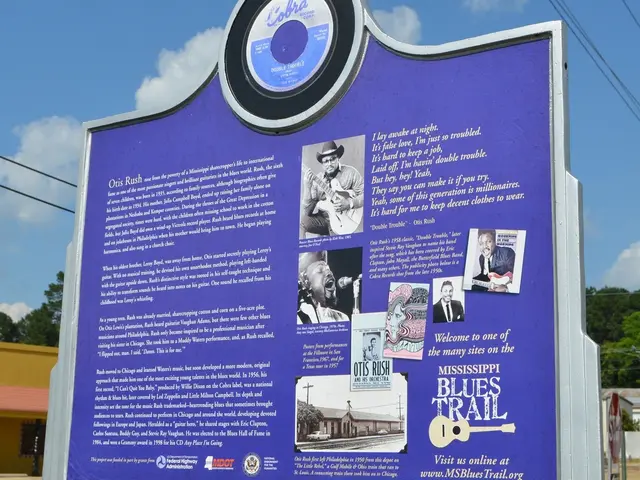Impacts of Past Events Shaped by Fashion
In the vibrant world of fashion, trends and styles have been shaped by a myriad of historical events and cultural movements. This article explores some of the most influential moments that have left an indelible mark on the way we dress.
The 1960s saw the rise of the Hippie movement, a countercultural phenomenon that popularised bohemian and psychedelic styles. Characterised by colourful clothing, long hair, sandals, and jewellery, the Hippie aesthetic was heavily influenced by figures such as Christ, Buddha, Francis of Assisi, and Mahatma Gandhi. Iconic elements included the Peace sign and symbols reflecting nature and love. The movement was further shaped by psychedelic graphic artists like Alton Kelley, Stanley Mouse, Wes Wilson, Rick Griffin, and Bonnie MacLean, who created concert posters for bands like the Grateful Dead, Jefferson Airplane, and Jimi Hendrix.
Another significant influence on fashion came from the women's suffrage movement, which popularised more practical and comfortable clothing for women. Looser fitting garments and the adoption of trousers became commonplace, symbolising a break from traditional gender norms.
The civil rights movement also left a lasting impact on fashion. African-inspired prints and designs became popular, as did the promotion of natural hairstyles and a rejection of Eurocentric beauty standards.
World War II played a significant role in shaping fashion trends as well. Due to fabric rationing, hemlines became shorter, silhouettes narrower, and clothing more practical.
The historical events mentioned above, including the women's suffrage movement, the civil rights movement, and the hippie movement of the 1960s, are not the only examples of how events have shaped fashion. World War I and II also had a profound influence, as did the modern world's interconnectedness, which has resulted in a blending of diverse cultural influences within fashion, leading to hybrid styles.
Fashion, beyond being a means of covering the body, serves as a form of cultural expression and connection, reflecting our globalized world. Globalization has enabled greater accessibility to international markets, allowing for the dissemination of fashion trends and styles on a global scale. Greater visibility for designers from diverse backgrounds has also been facilitated by globalization.
In conclusion, fashion is a dynamic and evolving field, shaped by historical events, cultural movements, and global trends. As we continue to navigate the complexities of our interconnected world, it is exciting to imagine the fashion innovations that lie ahead.
Read also:
- Mondelez prioritizes sustainability in its day-to-day business operations, with Kinh Do being no exception.
- Uncover Five Distant Money-Making Opportunities, Ready to Kickstart and delivering a daily earnings of $100 each.
- Gathering Gujarat's entrepreneurial community in the Innovation Dialogues hosted by our foundation, aiming to boost the pace of inclusive entrepreneurship and growth in Small and Medium Businesses.
- Mouth Cancer Symptoms, Identification, and Management Strategies







